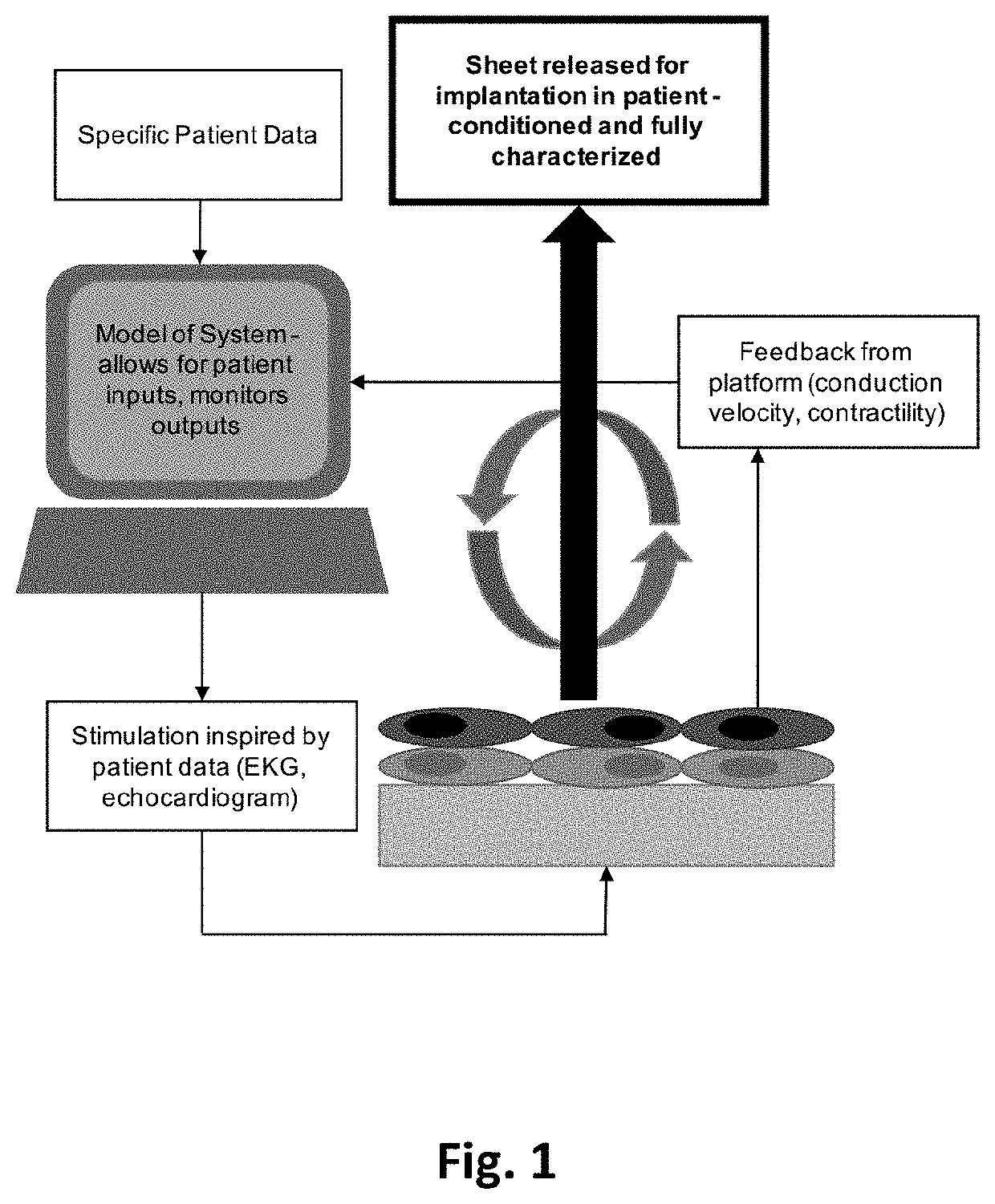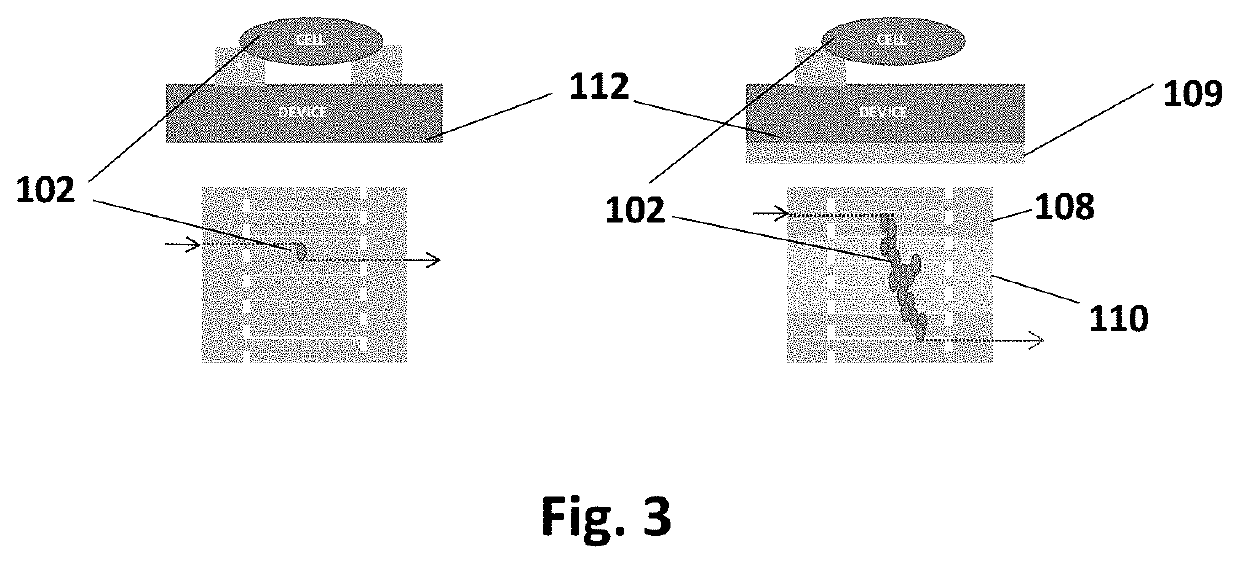Flexible device and its application for bio-cell in-vitro electrical and mechanical stimulation and characterization
a bio-cell and in-vitro electrical and mechanical stimulation technology, applied in the direction of skeletal/connective tissue cells, prosthesis, specific use bioreactors/fermenters, etc., can solve the problems of patch failure and the need for reoperation, the number of autologous cardiomyocytes that can be isolated from discarded heart tissue is insufficient to allow for the construction of effectively sized cell sheets, and the inability to meet the tissue requirements of the hear
- Summary
- Abstract
- Description
- Claims
- Application Information
AI Technical Summary
Benefits of technology
Problems solved by technology
Method used
Image
Examples
Embodiment Construction
Design
[0023]This device has been designed to achieve the following: cellular alignment, electrical stimulation, mechanical stimulation, conduction velocity readout, contraction force readout, and upon characterization, cell sheet release. In brief, the device achieves these design criteria through the following setup. The platform is based on a set of interdigitated comb electrical contacts 104. These are three-dimensional walls made of polydimethylsiloxane (PDMS) 105 coated with electrically conductive films of titanium and gold 108. Not only do the walls serve as a method for stimulating cells that are sitting on top of them, but their geometry and physical properties (namely stiffness) can be tailored to make them flexible (or rigid) enough to be bent by the range of forces applied by cells during contraction. In this way, they can be used to measure force throughout the cell culture, at the cellular or cell-group level. The walls 105 also play the role of a substrate that has an...
PUM
| Property | Measurement | Unit |
|---|---|---|
| angle | aaaaa | aaaaa |
| angle | aaaaa | aaaaa |
| aspect ratio | aaaaa | aaaaa |
Abstract
Description
Claims
Application Information
 Login to View More
Login to View More - R&D
- Intellectual Property
- Life Sciences
- Materials
- Tech Scout
- Unparalleled Data Quality
- Higher Quality Content
- 60% Fewer Hallucinations
Browse by: Latest US Patents, China's latest patents, Technical Efficacy Thesaurus, Application Domain, Technology Topic, Popular Technical Reports.
© 2025 PatSnap. All rights reserved.Legal|Privacy policy|Modern Slavery Act Transparency Statement|Sitemap|About US| Contact US: help@patsnap.com



